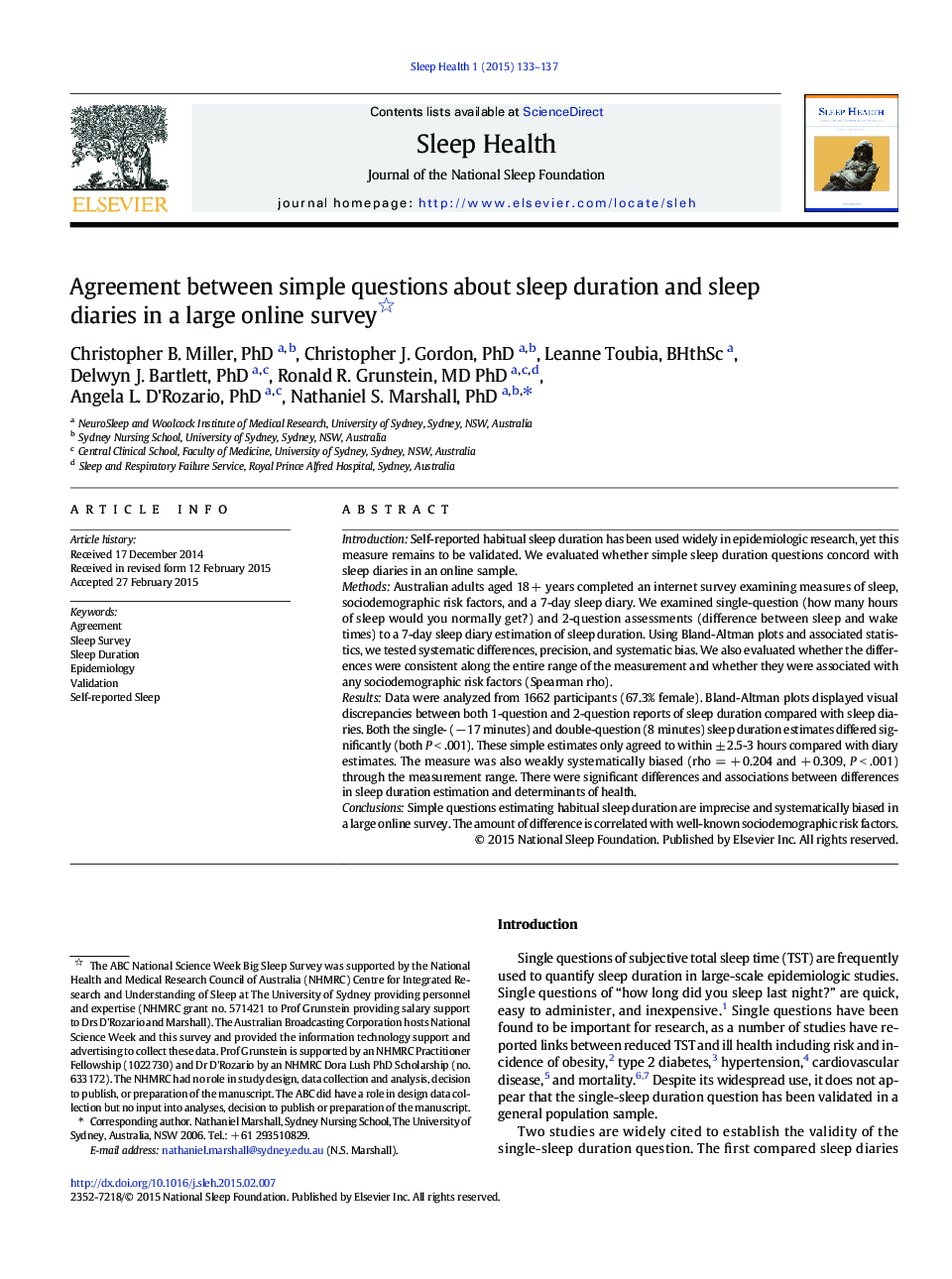| Article ID | Journal | Published Year | Pages | File Type |
|---|---|---|---|---|
| 916343 | Sleep Health | 2015 | 5 Pages |
IntroductionSelf-reported habitual sleep duration has been used widely in epidemiologic research, yet this measure remains to be validated. We evaluated whether simple sleep duration questions concord with sleep diaries in an online sample.MethodsAustralian adults aged 18 + years completed an internet survey examining measures of sleep, sociodemographic risk factors, and a 7-day sleep diary. We examined single-question (how many hours of sleep would you normally get?) and 2-question assessments (difference between sleep and wake times) to a 7-day sleep diary estimation of sleep duration. Using Bland-Altman plots and associated statistics, we tested systematic differences, precision, and systematic bias. We also evaluated whether the differences were consistent along the entire range of the measurement and whether they were associated with any sociodemographic risk factors (Spearman rho).ResultsData were analyzed from 1662 participants (67.3% female). Bland-Altman plots displayed visual discrepancies between both 1-question and 2-question reports of sleep duration compared with sleep diaries. Both the single- (− 17 minutes) and double-question (8 minutes) sleep duration estimates differed significantly (both P < .001). These simple estimates only agreed to within ± 2.5-3 hours compared with diary estimates. The measure was also weakly systematically biased (rho = + 0.204 and + 0.309, P < .001) through the measurement range. There were significant differences and associations between differences in sleep duration estimation and determinants of health.ConclusionsSimple questions estimating habitual sleep duration are imprecise and systematically biased in a large online survey. The amount of difference is correlated with well-known sociodemographic risk factors.
